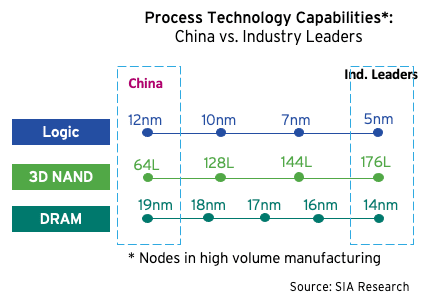The Joe Biden administration recently announced a new round of sanctions on China in an attempt to choke off access to AI and Semiconductor technologies developed by US and allied companies. Will these sanctions affect India? My thoughts below:
Let's first look at the sanctions at a high level. If you want details, this report by Gregory C Allen of CSIS does a phenomenal job. Additionally, a Wall Street Journal article, and a Twitter thread by Jordan Schneider, an analyst at @rhodium_group on China and technology sheds light on the fate of American executives working in Chinese AI and Semiconductor companies.
From the CSIS report: the policy first disclosed on September 1st this year was incomplete. On October 7th, the Biden administration announced a massive policy shift on semiconductor exports to China as well as revised rules for how the lists of restricted parties are managed. The revised rules require Chinese entities to obtain a license, under a presumption of denial, which in effect is a ban. In short, there are a few key components to this new policy:
- Chinese commercial and military entities can no longer purchase high end AI/Supercomputing chips
- Chinese semiconductor companies trying to build AI chips cannot get access to EDA tools needed to design these chips
- Chinese semiconductor companies trying to build chips cannot get access to US built semiconductor manufacturing equipment to build logic chips at 16nm or below, DRAM at 18nm or below and NAND at 128 layers or above
- Chinese semiconductor companies trying to build AI chips using pirated software cannot get them made outside of China. This is a significant disadvantage because Chinese foundries are years behind TSMC
- Chinese companies trying to build their own advanced semiconductor manufacturing equipment cannot get access to US built components
- Non-US companies are prohibited from providing any service to Chinese entities in the manufacturing of AI/supercomputing chips. For example, ASM Lithography
- US persons can no longer support China’s advanced chip development programs. The definition of US persons is rather broad.
This is a huge escalation aimed at crippling and destroying the Chinese high-technology industry. It appears that the Biden administration saw the chart below and decided to draw a backslash (\).
Where does that leave India? In the short and medium term, I don't expect a problem but in the long term this represents an opportunity. At present, there is really no semiconductor manufacturing to speak of in India and all of semiconductor devices consumed in India are imported from various places as can be seen below. A few proposals have been made under the new make in India policy, but it will take some time for that to come to fruition.

53% of the chips that India imports are from China, which obviously a matter of concern, but let's look at the worldwide semiconductor manufacturing capacity. This is from December 2020, but things don't change that fast in the semiconductor land.
China has exactly zero capacity in chips manufactured at nodes less than 10nm. But, what about chips manufactured at nodes between 10nm and 20nm? At 16nm/12nm nodes, SMIC, which is China's most advanced fab, had a revenue of $354Mn in 2021, which is about 3% of the total WW foundry revenue at those nodes. In fact a majority of SMIC's revenue is at 65nm+.
That's understandable given that SMIC has just one fab that can manufacture chips at 14nm or below. This
piece in EE Times Asia offers a ton of insights into SMIC's internals.
This means that a majority of Indian imports from China are at 28nm or above and minor imports at more advanced process nodes can easily be shifted to some other source. The US sanctions are aimed at crippling Chinese capacity at 16nm or below and thus should not affect Indian imports whatsoever in the short and medium term. In addition, these sanctions should not have a negative impact on the supply chain for mainstream semiconductors. That said, there is currently no known antidote for self goals.
Over the next 3-4 years, the Indian chip imports are expected to trend much more towards advanced chips manufactured at 14nm or below per Business Standard. This is where the opportunity is - the Government of India must take bold steps and do whatever is necessary to get a global fab major to setup a factory at below 14nm post haste.
If the US sanctions are successful, and there are no geopolitical cataclysms, we will see a successful shift in India's IC imports from China to other countries, and possibly even Indian made too.








Comments
Post a Comment